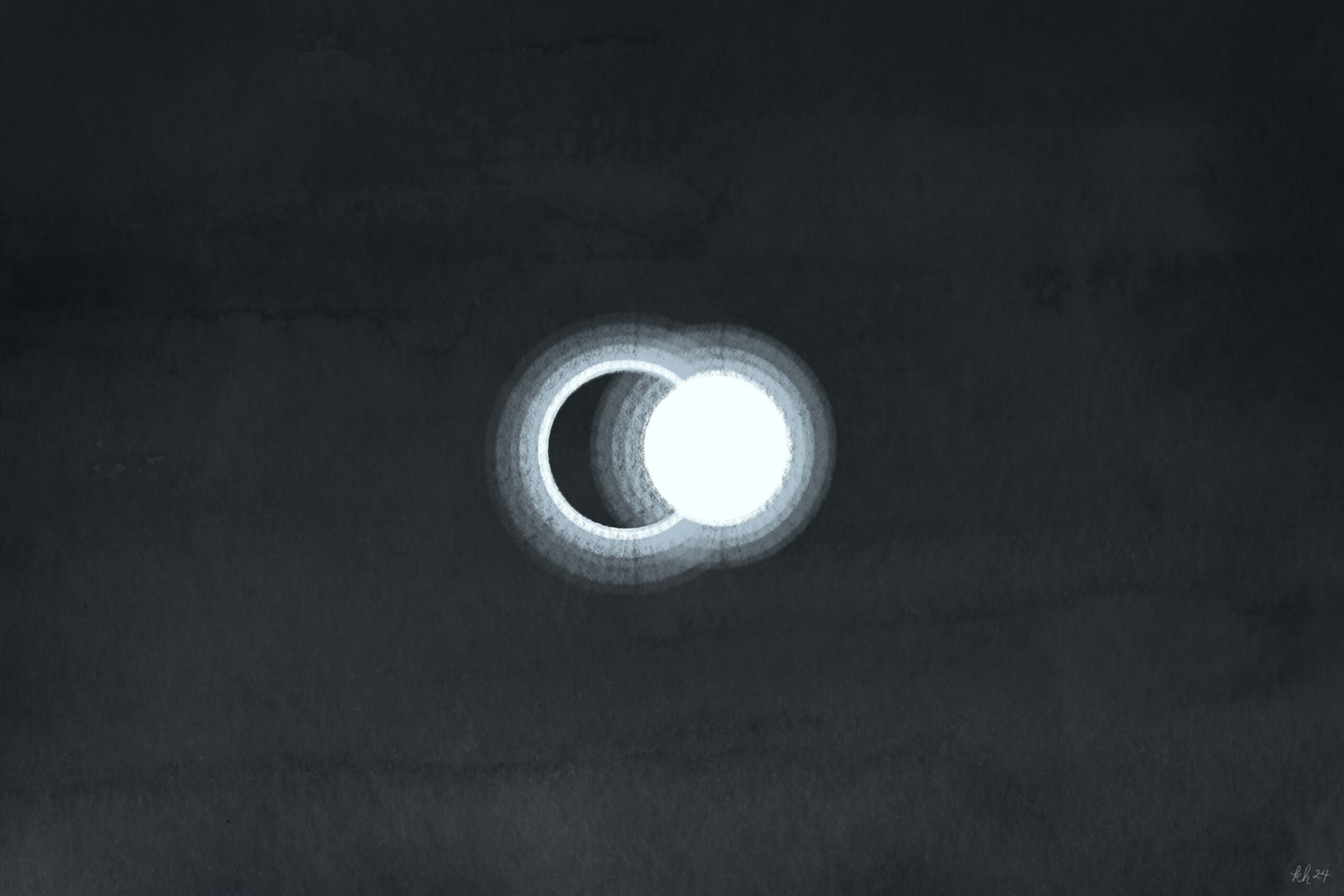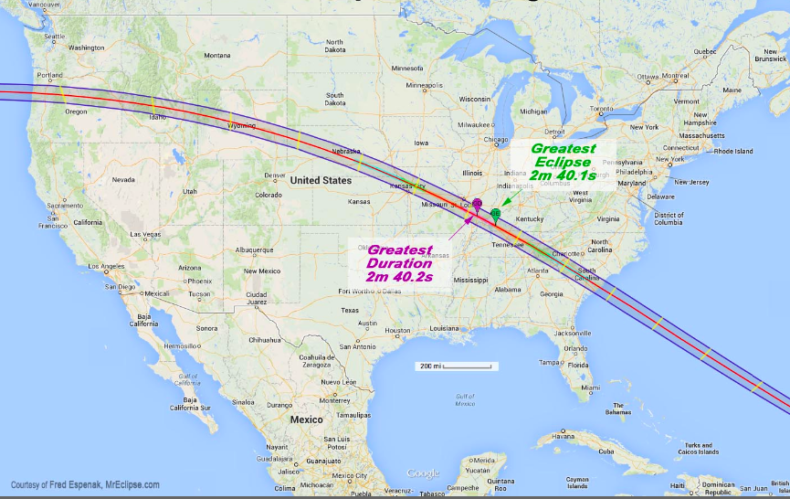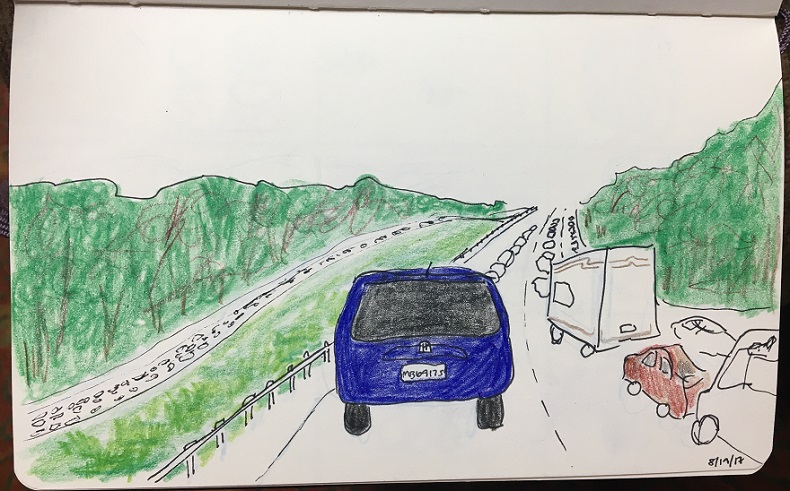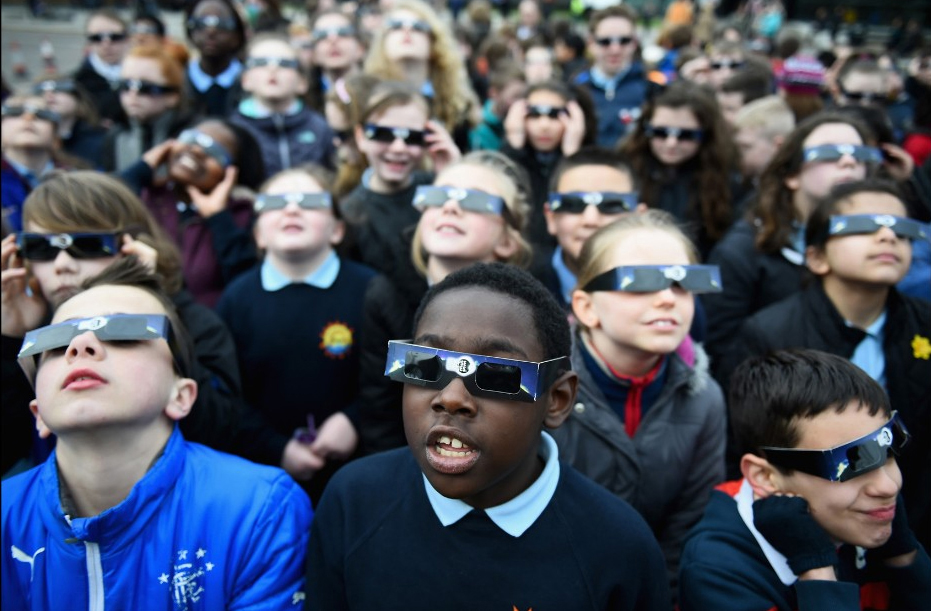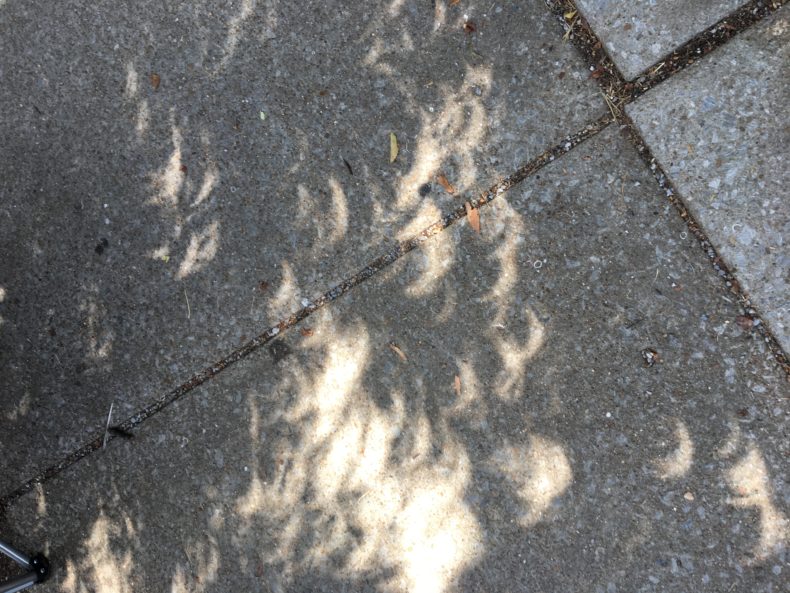In the week leading up to a total solar eclipse, we bring you a daily lineup of eclipse writing from the People of LWON. Helen’s phone died before the last eclipse, and thank goodness for that, because now we have her charming drawings to capture its spirit.
I’m writing this from a traffic jam on I-95.
When we were choosing days on the schedule for Eclipse Week, nobody wanted the responsibility of writing a post the day of the eclipse. Because I have an overactive sense of duty, I signed up for this post, then joked that I’d be writing it on I-95, from the world’s worst traffic jam, on my phone.
Well, the joke’s on me; my phone died.
Surely no one can expect anything coherent from me, from the right lane of an interstate somewhere south of Fayetteville, NC. Instead, I present some eclipse impressions.
1. Traffic. The drawing that starts this post is from the worst traffic we hit on Saturday, on I-95 between Washington, D.C., and Fredericksburg. Here’s the thing, though – I think that may have been normal August weekend traffic. Apparently taking 2.5 hours to go 30 miles is not that unusual. (It was many hours after that traffic jam that my phone gave up its fight. Fortunately, I also brought a laptop.)
2. Eclipse party. For Monday’s eclipse-viewing fun, we consulted a list of NASA-affiliated events and chose a park in Mount Pleasant, South Carolina, where the moon was supposed to cover the sun for a minute and 55 seconds of totality. Laura Penny, an astronomy professor at the College of Charleston, had coordinated more than a dozen parties at neighborhoods around the area, hosted by professors and students. Penny herself hosted ours, with her kids, friends, and mom, many of them in matching t-shirts. Here’s Penny projecting the image of the as-yet-uneclipsed sun through a telescope onto a piece of paper.
Continue reading →
